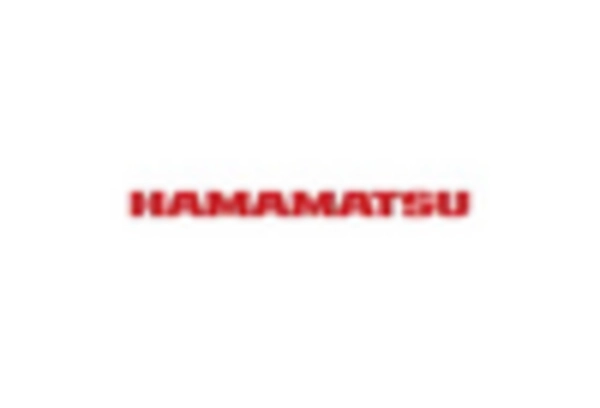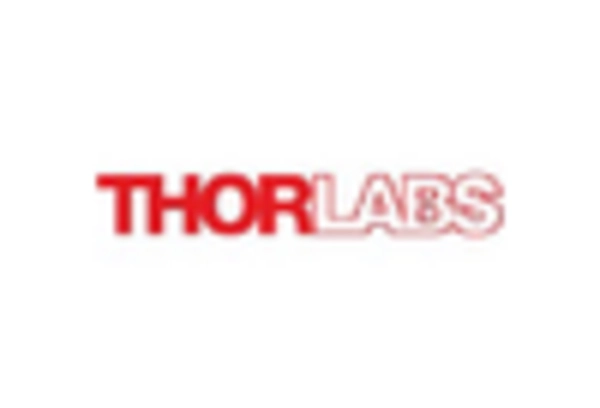Growth in Healthcare Sector
The Optical Detector Market is benefiting from the expanding healthcare sector, where optical detectors play a pivotal role in medical diagnostics and monitoring. Technologies such as optical coherence tomography and fluorescence imaging are increasingly utilized for non-invasive procedures, enhancing diagnostic accuracy. The healthcare industry's focus on improving patient outcomes and reducing costs is likely to drive demand for advanced optical detection technologies. Market analysis suggests that the healthcare segment could witness a growth rate of approximately 7% over the next few years, highlighting the importance of optical detectors in modern medical practices.
Rising Demand for Consumer Electronics
The Optical Detector Market is experiencing a notable surge in demand driven by the proliferation of consumer electronics. Devices such as smartphones, tablets, and smart home appliances increasingly incorporate optical detectors for enhanced functionality. For instance, the integration of optical sensors in smartphones for facial recognition and augmented reality applications has become commonplace. This trend is projected to contribute significantly to market growth, with estimates suggesting a compound annual growth rate of approximately 8% over the next five years. As consumers seek more advanced features in their devices, manufacturers are compelled to innovate, thereby propelling the Optical Detector Market forward.
Advancements in Automotive Applications
The Optical Detector Market is witnessing substantial growth due to advancements in automotive applications. The automotive sector increasingly relies on optical detectors for various functionalities, including collision avoidance systems, adaptive cruise control, and lane departure warnings. The integration of these technologies enhances vehicle safety and efficiency, aligning with the industry's shift towards automation and smart vehicles. Reports indicate that the automotive segment is expected to account for a significant share of the optical detector market, with projections estimating a growth rate of around 10% annually. This trend underscores the critical role of optical detectors in shaping the future of transportation.
Increased Focus on Environmental Monitoring
The Optical Detector Market is experiencing growth due to an increased focus on environmental monitoring. Optical detectors are essential for measuring air and water quality, detecting pollutants, and monitoring climate change indicators. As regulatory bodies and organizations emphasize sustainability and environmental protection, the demand for reliable optical detection technologies is likely to rise. Industry expert's suggest that the environmental monitoring segment could see a growth rate of approximately 6% annually, driven by the need for accurate data to inform policy decisions and public awareness. This trend underscores the vital role of optical detectors in addressing environmental challenges.
Emerging Applications in Industrial Automation
The Optical Detector Market is poised for growth as industrial automation continues to evolve. Optical detectors are integral to various applications, including quality control, process automation, and safety monitoring in manufacturing environments. The increasing adoption of Industry 4.0 principles is driving the demand for advanced optical detection solutions that enhance operational efficiency and reduce downtime. Market forecasts indicate that the industrial automation sector could contribute significantly to the optical detector market, with an anticipated growth rate of around 9% in the coming years. This trend reflects the critical role of optical detectors in optimizing industrial processes.















Leave a Comment